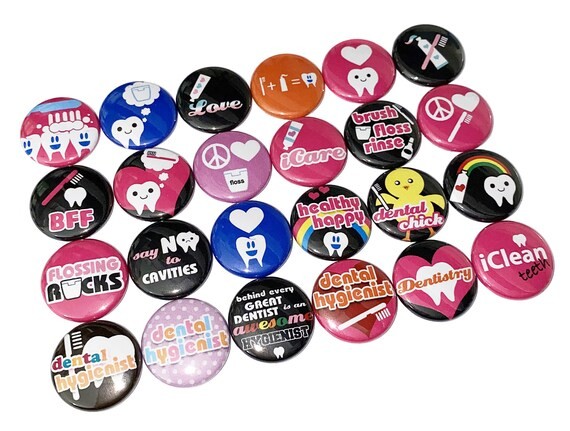
December 9, 2023, 11:53 am
Pediatric dentistry is a specialized field that caters to the dental care needs of children. Creating a welcoming and non-intimidating environment for young patients is crucial in this field. While there are numerous strategies to achieve this goal, one often-overlooked approach is having pediatric dentists wear buttons. In this blog, we will explore the reasons why pediatric dentists should consider wearing buttons and the positive impact this simple gesture can have on their young patients.
1. Establishing a Friendly Connection:
Pediatric dental patients, especially younger children, often experience anxiety and fear when visiting the dentist. These fears can stem from a lack of familiarity with the dental office, the treatment procedures, or the dental professionals. Wearing buttons with friendly and approachable designs can help pediatric dentists establish an immediate connection with their young patients.
2. Non-Threatening Visual Cue:
Buttons can serve as non-threatening visual cues that make the dental team appear more relatable and less intimidating. When children see pediatric dentists wearing buttons with cheerful images, cartoons, or characters, it can instantly put them at ease and reduce their anxiety.
3. Building Trust and Rapport:
Trust is a crucial component of the dentist-patient relationship. Pediatric dentists who wear buttons create a more approachable and friendly persona, which fosters trust and rapport with young patients. When children feel comfortable and safe, they are more likely to cooperate during their dental appointments.
4. Distraction and Engagement:
Buttons can be a valuable tool for distraction and engagement during dental procedures. Dentists can use buttons with interactive designs or stories to keep children entertained and engaged while undergoing treatment. This distraction can make the dental experience more pleasant and less stressful for young patients.
5. Personalized Experience:
Buttons can be personalized to match the interests and preferences of individual patients. Pediatric dentists can wear buttons featuring a child's favorite cartoon character, superhero, or animal. This personalization can make the child feel special and valued, further enhancing their overall experience.
6. Conversational Icebreaker:
Buttons often serve as conversational icebreakers. Pediatric dentists can use the buttons as conversation starters to engage children and establish a connection. Asking about a character or design on the button can help put young patients at ease and make them more comfortable with the dental team.
7. Positive Association:
Positive experiences at the dentist's office are vital for shaping a child's perception of dental care. Pediatric dentists who wear buttons create positive associations with the dental environment. These positive associations can lead to a more cooperative and less anxious attitude towards dental visits in the future.
8. Familiarity and Comfort:
The dental office can be an unfamiliar and intimidating place for children. Buttons with familiar and friendly images can make the dental office feel more comfortable and less daunting. Young patients may associate the buttons with a sense of security and familiarity.
9. Education and Motivation:
Pediatric dentists can use buttons as educational tools. Buttons with oral hygiene tips, such as brushing and flossing instructions, can serve as motivational reminders for young patients. These buttons can reinforce the importance of good oral hygiene practices in a fun and engaging way.
10. Promoting Oral Health:
Buttons with dental-related designs, like happy tooth characters or toothbrushes, can act as subtle reminders of the importance of oral health. Pediatric dentists can use these buttons to initiate conversations about dental care and educate children about the benefits of maintaining healthy teeth and gums.
In conclusion, the use of buttons by pediatric dentists can have a substantial impact on the experiences of young patients. Buttons serve as a powerful tool for creating a welcoming and friendly dental environment, reducing anxiety, and establishing trust and rapport. Pediatric dentists who incorporate buttons into their practice can help children associate dental care with positivity and fun, fostering a more cooperative and enjoyable atmosphere for their young patients. It's a small but significant step towards promoting oral health and ensuring that children have a positive perception of dentistry from a young age.
